Contemporary vs modern design: an interior styling guide
Written by
18 April 2023
•
6 min read
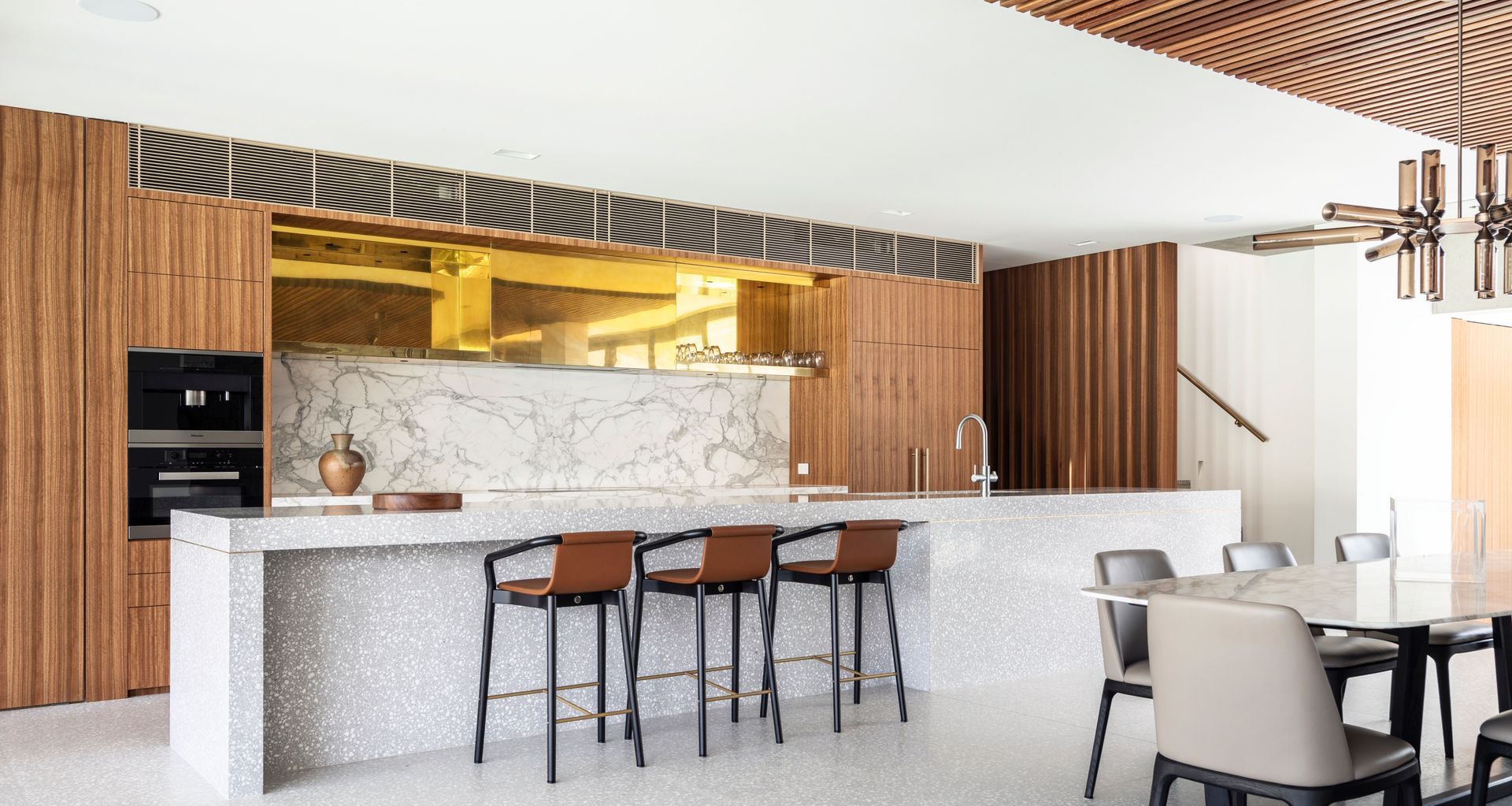
Understanding the difference between contemporary vs modern design is an important step toward creating a cohesive and beautiful space no matter which design style you ultimately choose to go for. It can also help you appreciate the nuances and the finer details that characterise any interior design style. You’ll also gain more confidence in your own design decisions which will result in a more harmonious space that works for you and your guests.
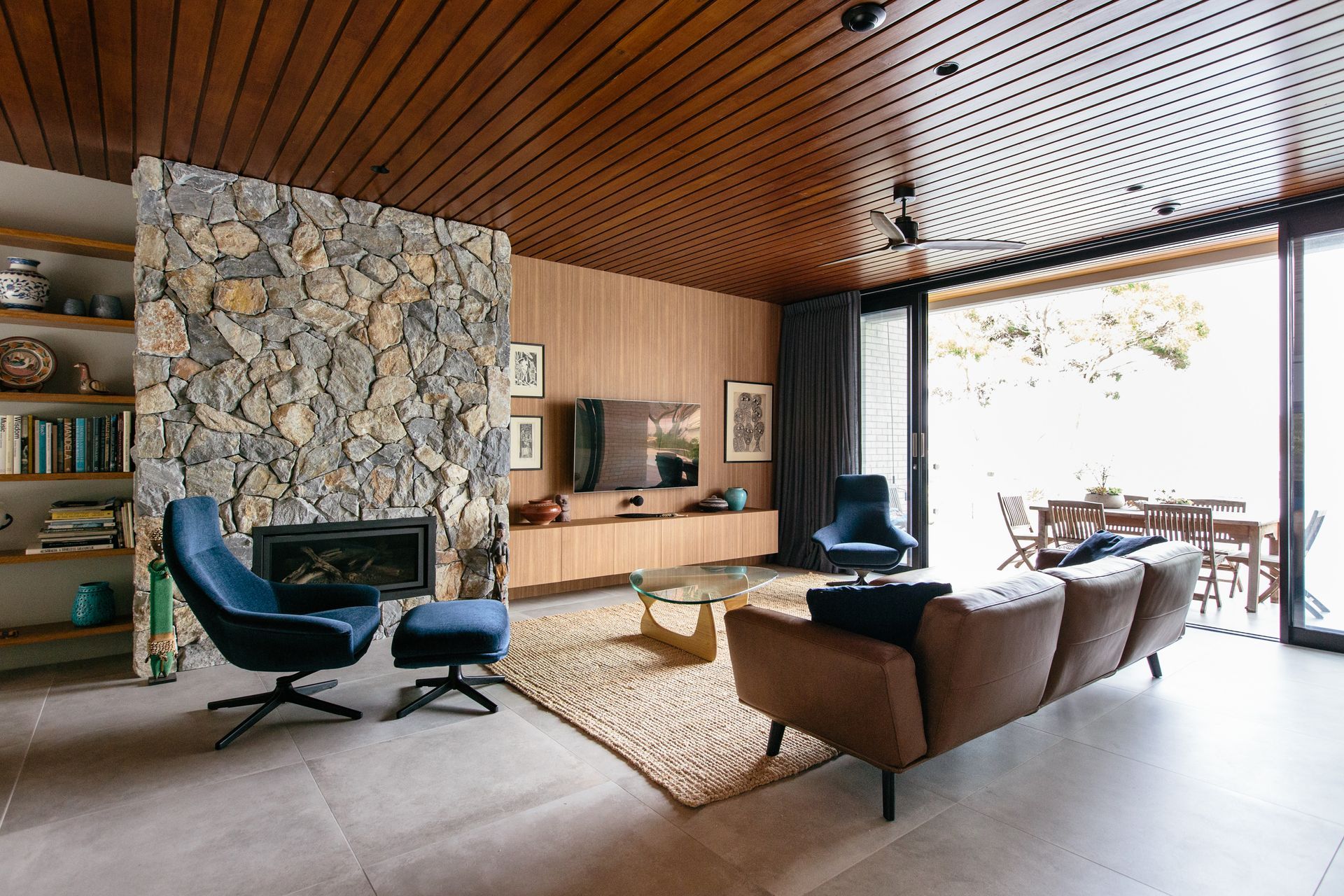
What is contemporary design?
Contemporary design is an interior decor style that embraces the present moment. It isn't tied to any specific time period and reflects what is popular and stylish today.
The basis for the style is rooted in current trends which means that it's always evolving. Because of these constantly-shifting trends, it's difficult to determine the exact traits of contemporary design outside of what is in favour in the here and now.
However, as of 2023, there are a few common traits in contemporary features and furnishings. Some characteristics include:
- Muted neutral colours and hues (beige and grey) accompanied by black and white
- A monochromatic colour scheme that pairs one colour with those neutrals (could be multiple shades of one hue - e.g. sky blue and cornflower paired with white/beige)
- Bold blocks of colour
- Multiple interesting textures and materials
- Bold, crisp, and straight lines (accentuating art, defining countertops and tables, carved multi-panned wall materials etc)
- Angular and geometric shapes
- Bright lighting to illuminate strong accents
- High ceilings/open space floor plans
- Large windows.
At the moment, the contemporary style is closely aligned, in terms of aesthetics, with minimalism. As it happens, this also shares qualities with what’s defined as modern design too.
Related article: Complete guide to contemporary home decor
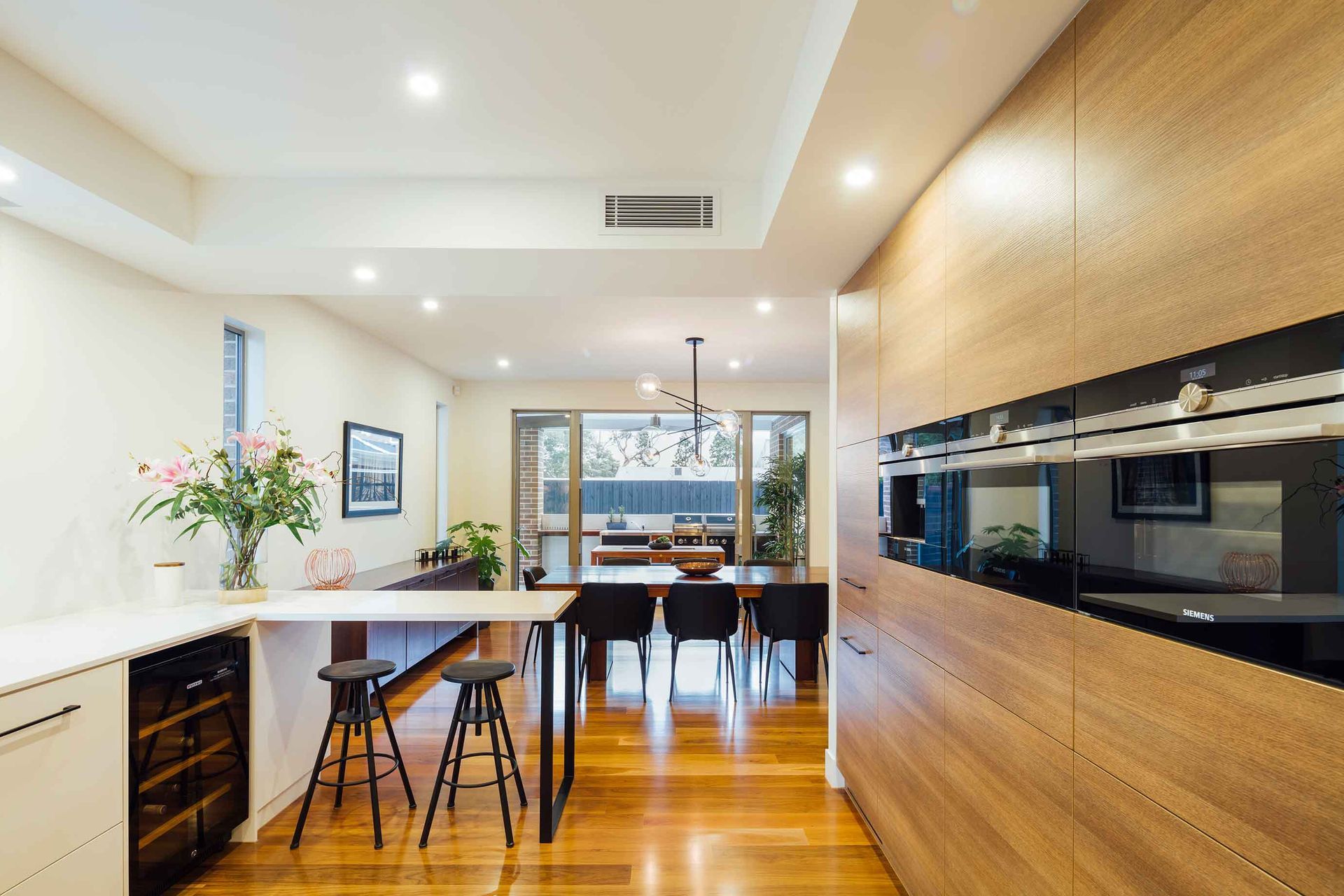
What is modern design?
Despite its name, the term modern design refers to a style that has early-mid 20th-century roots. It is also often called "mid-century modern" design for this reason.
It took inspiration from German Bauhaus and Scandinavian design principles, but it's a unique decor scheme of its own. It is not an ever-evolving style, so what constitutes a modern design now still will be the case in 10 years' time.
This design scheme is about minimalism and refinement. It's a style that emphasises high-quality furnishings while sticking to basic design principles that have been around for almost a century. It's considered a timeless classic that will never go out of fashion.
Some characteristics of modern design features/furnishings include:
- A monochromatic colour scheme (black/white + one other colour)
- Bold and clean lines
- Geometric patterns and simple shapes
- Intentional asymmetry in all aspects of design
- A lack of opulent features (arches, columns, ornamentation)
- A focus on functionality, utility, and simplicity
- Natural materials (stone and wood)
As you’ll see, there are some similarities between modern vs contemporary design. However, the key fact that one style is clearly defined compared to another that constantly evolves is a fundamental difference that will always separate the two.
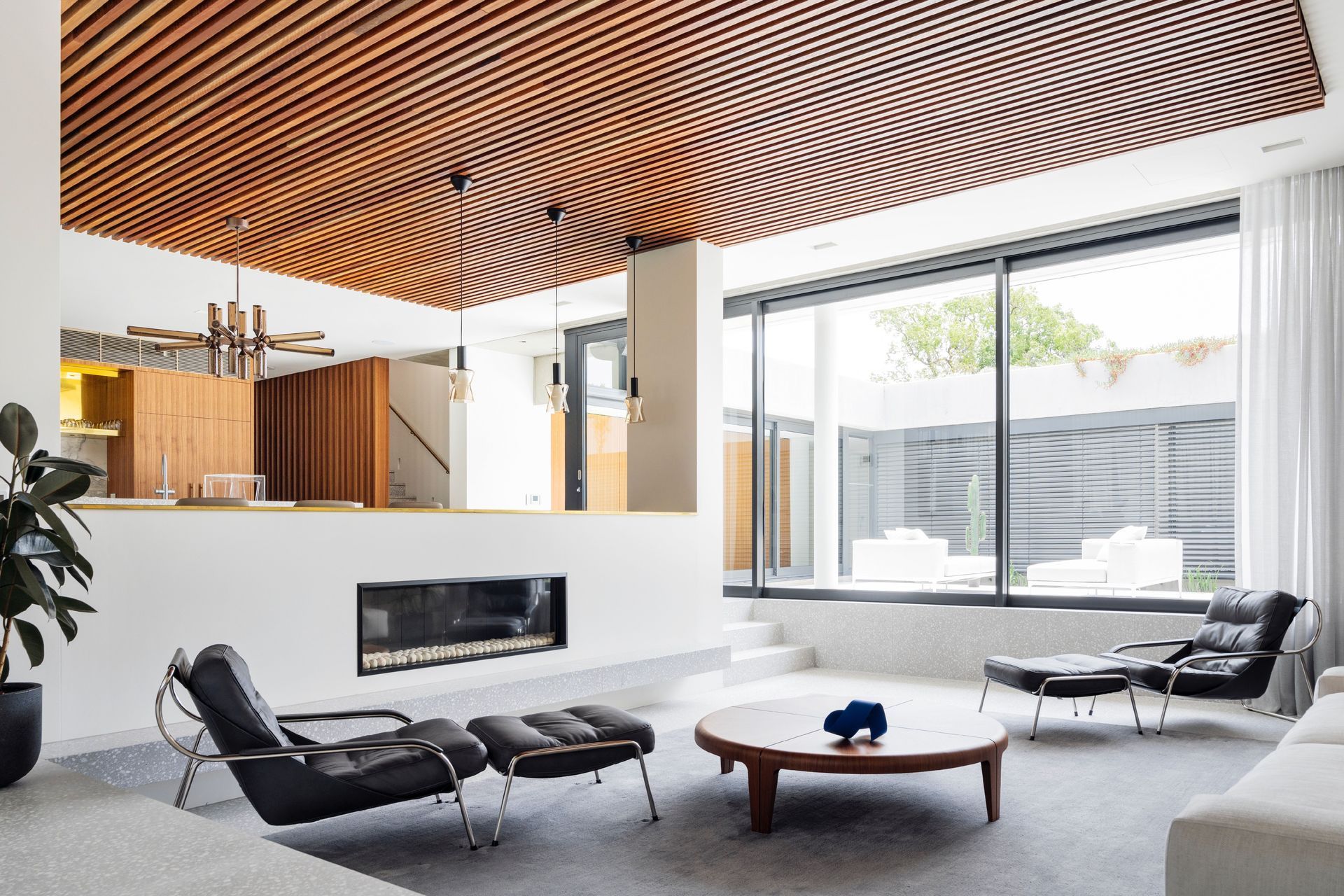
Contemporary vs modern design: similarities and differences
In this current time, there are some strong similarities between modern interior design and what is considered contemporary interior design.
First, they both draw on features from other design styles with both relying heavily on minimalism to create a simple and appealing space.
They also both make use of bold lines and monochromatic colour palettes. Simple shapes reign supreme in both decor schemes, as do geometric shapes in both art and furnishings. Both styles prioritise functionality and reject old-timey frills.
Despite being a style focused on simplicity, however, modern design is distinct from contemporary spaces in several ways.
The shape of a modern style room will be different from a contemporary one. While contemporary design is synonymous with open floor plans, large windows, and high ceilings, rooms in a modern home can be small and cosy. They also may have somewhat dimmer lighting compared to a fuller wash of natural light that is desirable in contemporary rooms and environments.
Modern decor pieces also use a lot of natural materials while contemporary design focuses on sleek alternatives. While Mid-century modern may feature wooden accents, a contemporary style space may feature a vivid coloured finish. Similarly, modern stone accents might be otherwise represented by designed plastic ones in a contemporary interior.
Contemporary furniture also looks somewhat different from modern alternatives. It's more geometric and is more likely to feature brightly-coloured cushions. Mid-century modern couches might have patterned fabric in neutral hues against curved lines and an organically-shaped back.

Other aspects of contemporary design
On a practical level, contemporary design can be more expensive than modern design. This is because you'll need to invest in newer, sleeker and potentially more expensive furniture. You also will need to change with the times to stay on top of current trends if you want a space that truly remains contemporary. However, at the moment, contemporary design is characterised by minimalism and natural light, making it a more accessible style to adopt in some ways as there’ll be fewer furnishings you’ll need to invest in.
This also creates a sense of airy openness in your home. Some people believe it to be impersonal, but this is far from the case. It means less clutter, showcasing the best and most personal parts of your design scheme, including original art and furniture choices.
Because of these traits, contemporary design can be easily incorporated into all areas of your home. Living rooms and dining room spaces are the most common spaces where this style is expressed but bathrooms and kitchens also look clean and sleek when designed with contemporary features and accents.
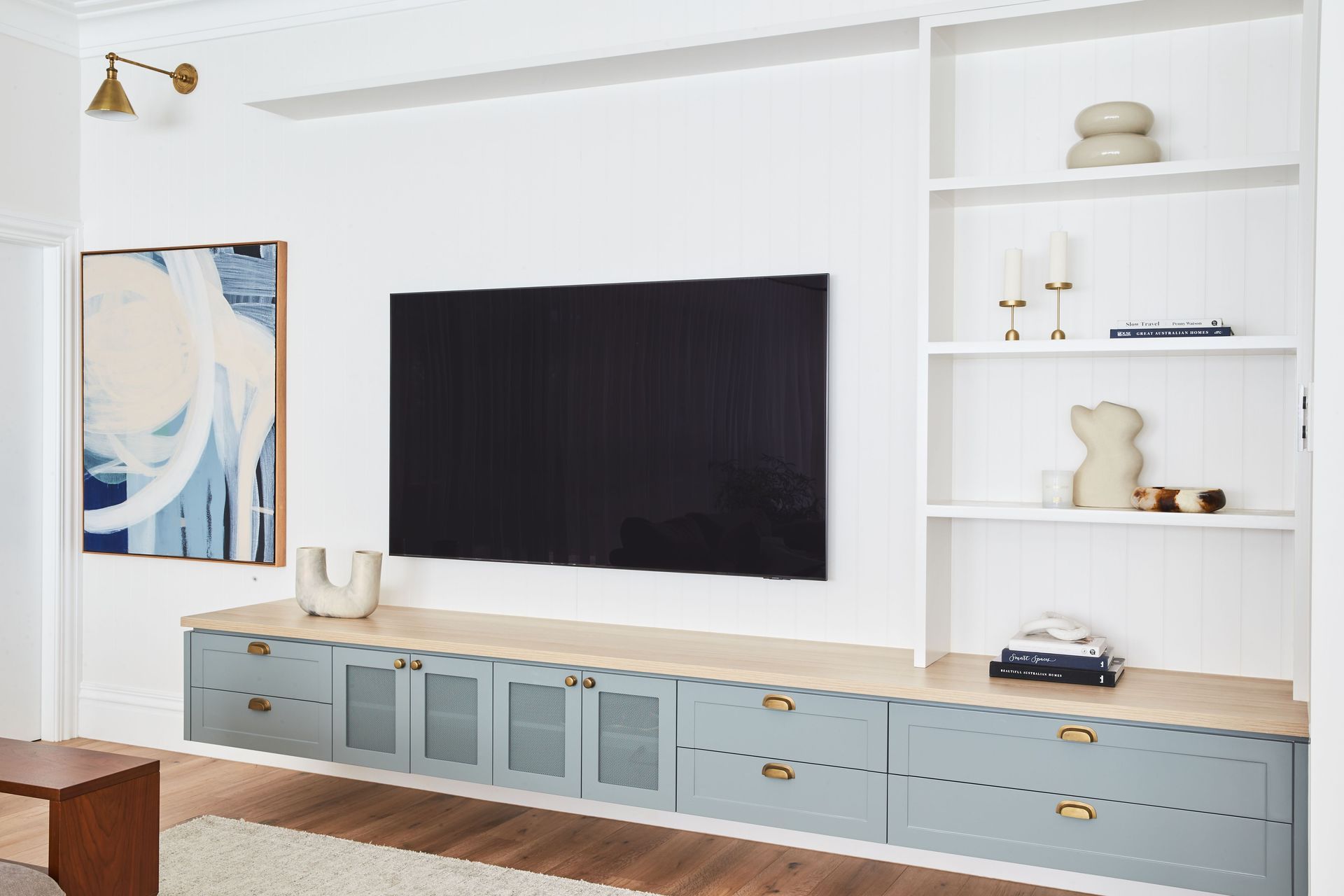
Other aspects of modern design
Modern design doesn't give off the same crisp openness as contemporary decor does. Instead, it feels more at one with the natural world. Materials like wood and stone give even the biggest spaces a comfortable and welcoming atmosphere.
When you live in a modern space, you won't see a lot of decoration but will instead enjoy a simple ambience. The natural materials that make up each room will be exposed and prominently on display. You may also add earthy hues like dark or bamboo green as accents.
Because of the emphasis on natural materials and design, modern decor and styling are most common in social spaces such as living rooms. However, it is also great for creating warmth in bedrooms and home offices too.
Related article: 13 minimalist home decor ideas for effortless style
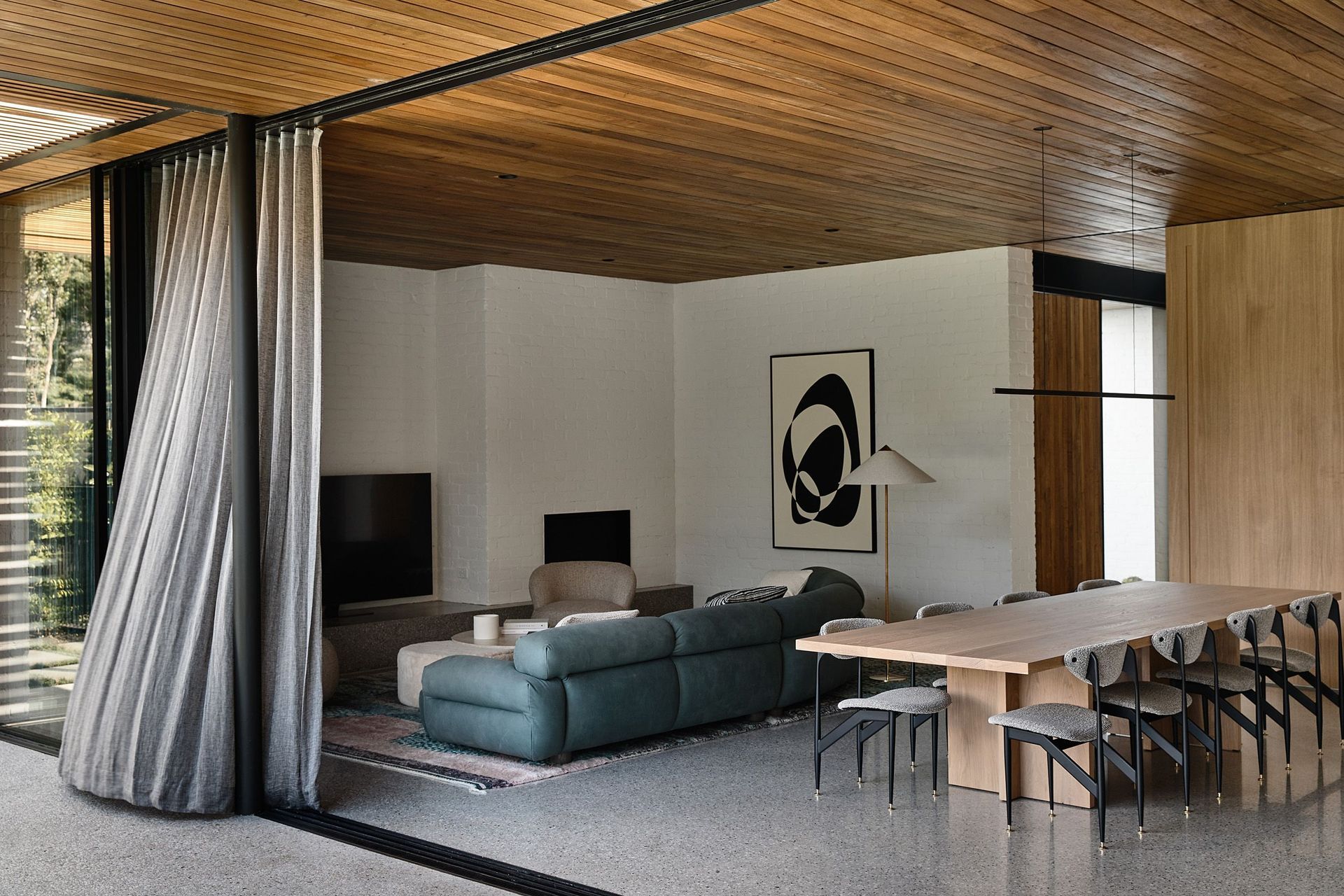
Understanding contemporary vs modern design
As you can see, there are some key differences between contemporary vs modern design, the main point being one as a defined style vs one as an ever-evolving style. Now you’ve got a thorough understanding of both you can revamp your home with whichever one appeals. Whether that’s sleek contemporary decor or a 20th-century throwback in the form of modern furniture you’ll know exactly what types of options to go for in the style of your choosing.